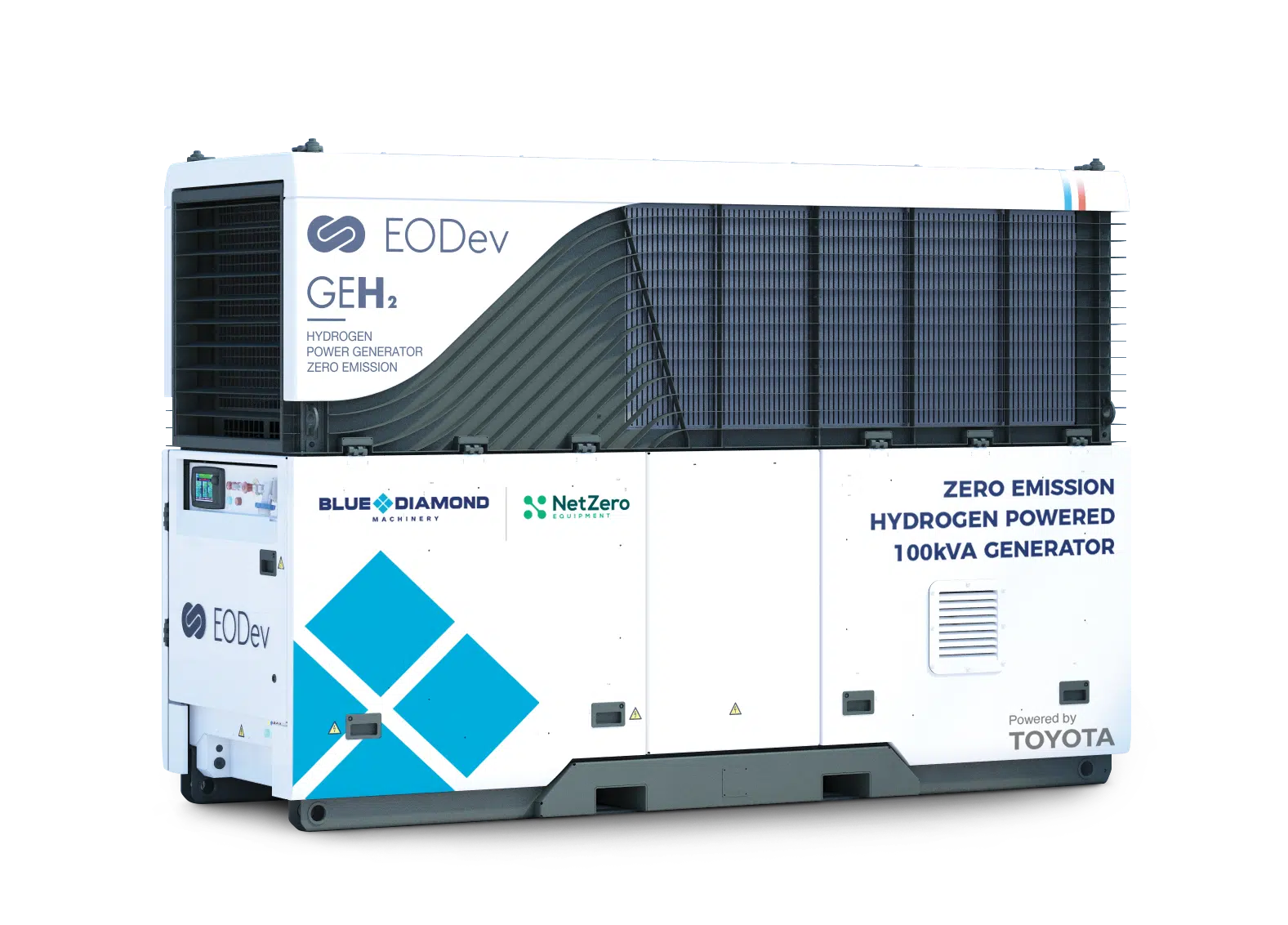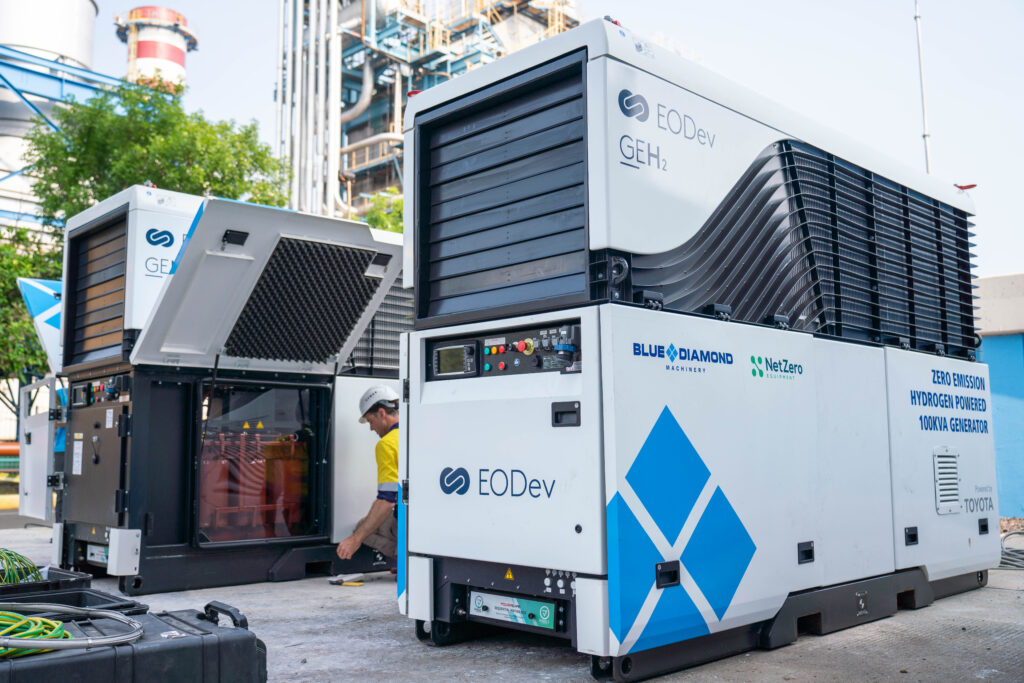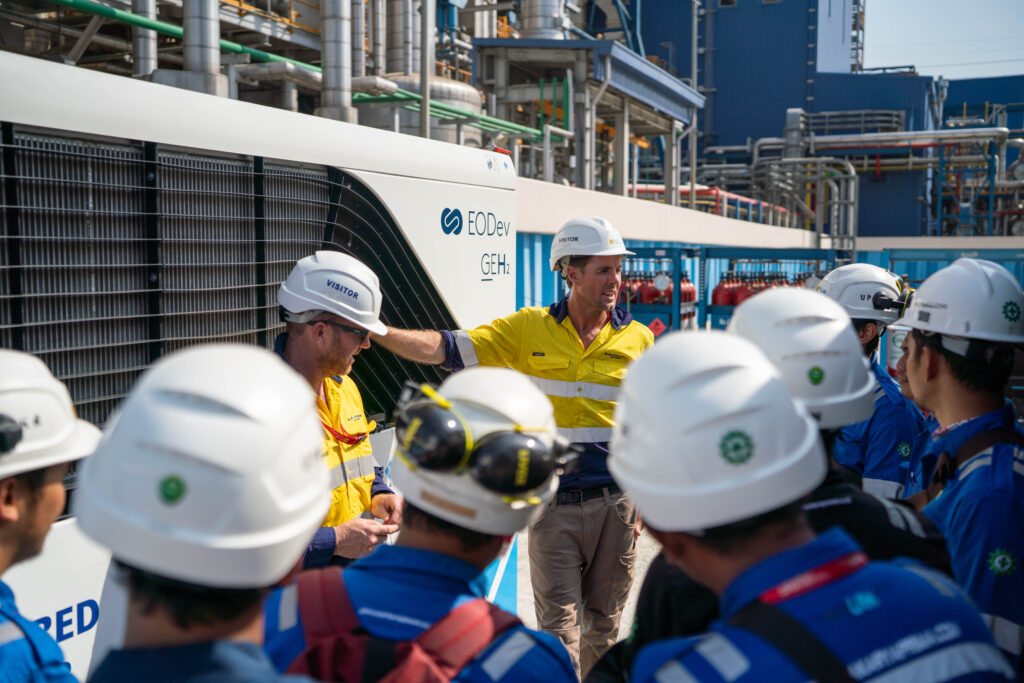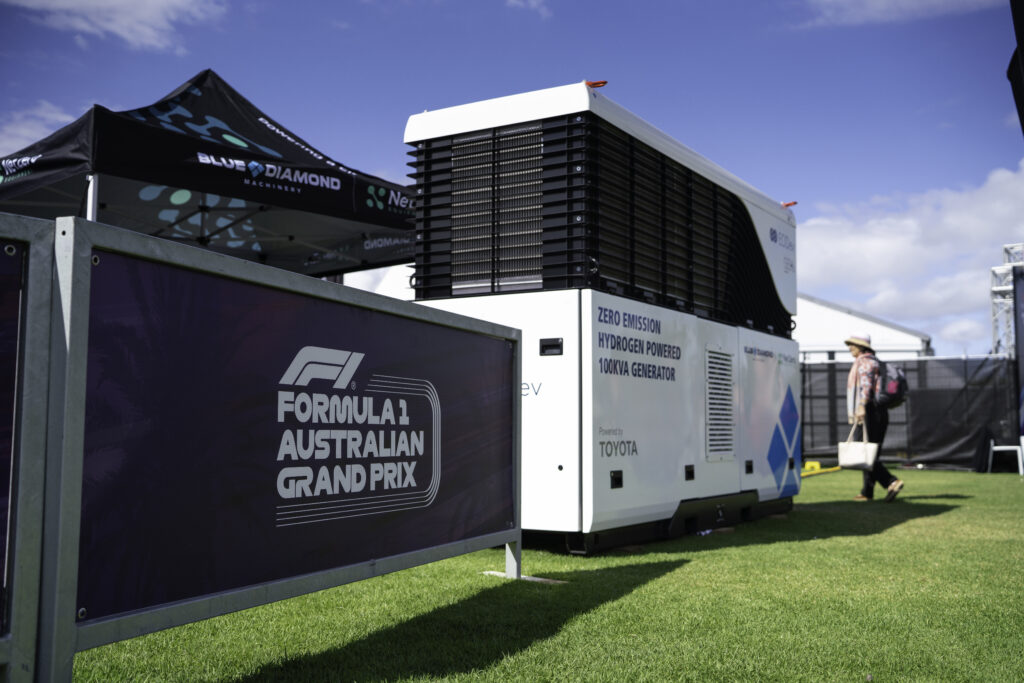GEH2 Hydrogen Generator – 100kVA

The GEH2 brings you the latest generation of fuel cell technology and 80kW of clean, quiet and instant power.

The GEH2 is designed to replace diesel or gas gensets in mobile, prime and standby applications.
It’s an emission-free generator to power an emission-free future.
Forget fumes, earmuffs and masks – the only output from the GEH2 is a little water and some heat. Perfect for those who need a strong power supply, without compromising on emission output.

The GEH2 offers more than power, it gives you the flexibility to work intelligently and productively without the unproductive site visits and delays due to maintenance. Experience built-in online monitoring via the cloud and direct notifications if something needs addressing. There’s even a remote interface so you have control at any time, no matter where you are.

The GEH2 is designed to replace conventional diesel and gas gensets across prime, and emergency stand-by application almost anywhere in need of strong, reliable, efficient power.

by
on
by
on
by
on
The GEH2 is Australia’s first zero emission hydrogen power generator. Here are some common questions we’ve been asked:
Absolutely. The potential of hydrogen technology has been around for decades, but the accessibility of hydrogen has held it back. Until now. Notably, the GEH2 has in-built multiple sensors and safety features designed to flag any errors or faults when they occur. It has been tried and tested to over the years as a durable, reliable energy source that can power anything. Even Marvel Stadium.
Simply put, a hydrogen generator uses pure hydrogen to produce immediate energy for power generation. There’s no emission output, no pollution and zero wastage. In the case of the GEH2, we pair hydrogen with fuel cell technology. The generator uses hydrogen with a fuel cell and a lithium-ion iron phosphate battery to produce power. Find out more here.
Firstly, a hydrogen generator needs hydrogen, which needs to extracted and produced. Once it is extracted, it is compressed and inserted into cylindrical pressurised storage to be transported to the generator for use. Once the hydrogen reaches the fuel cell, oxygen and hydrogen react with one another to produce power through electro-chemical conversion. The result is clean, reliable and consistent power with zero emission output – only a little water and some heat. Find out more here.
There are two main ways: the reforming process and via electrolysis.
Reforming mostly uses fossil fuels to produce hydrogen from a by-product (such as natural gas) and accounts for about 95% of overall hydrogen production. In this case, the methane from the natural gas will react with high temperature steam under pressure in order to produce hydrogen.
On the other hand, electrolysis is a chemical extraction process using either renewable sources or via a grid connection to split water into its respective hydrogen and oxygen components. It’s the cleanest way to produce hydrogen but only accounts for about 5% of overall hydrogen production.
Hydrogen generators provide a clean, safe and convenient alternative to energy with the capability of connecting to diesel or gas generators and electrical grids. As a source of decarbonated energy, hydrogen generators provide uninterrupted power without pollution while drastically lowering noise emissions. Hydrogen generators provide a cost-effective power solution for industries wanting to minimise their carbon footprint through the use of a consistently pure source of hydrogen on demand.
Haven’t found the answer you’re looking for?
Let’s have a chat and we’ll help